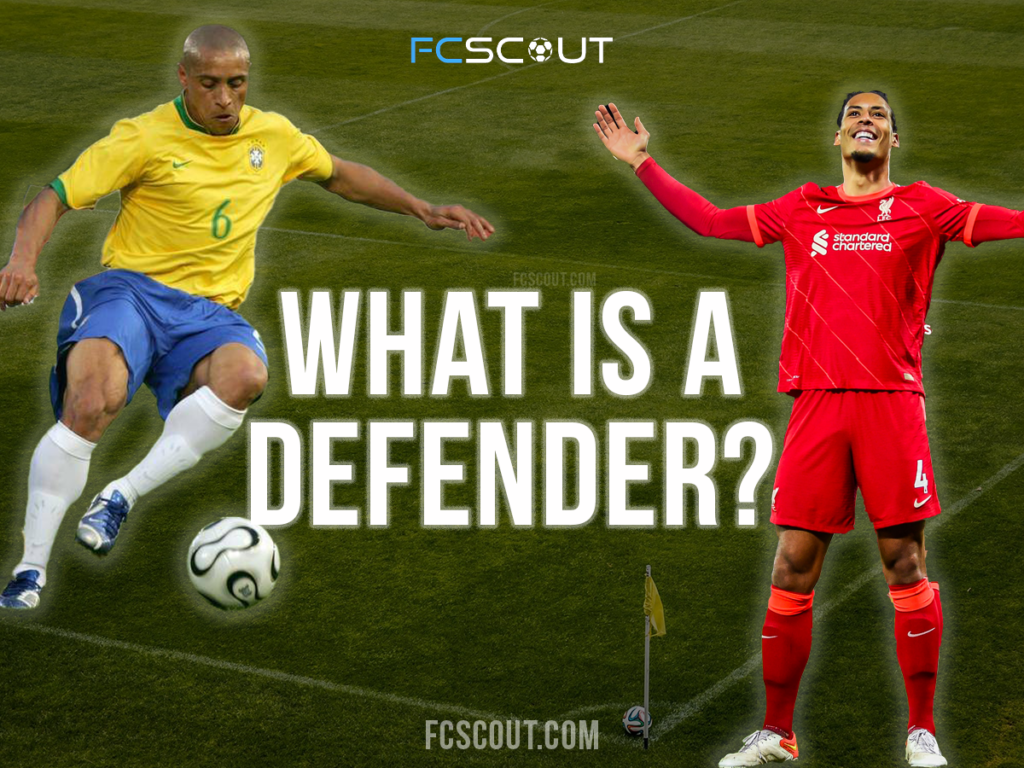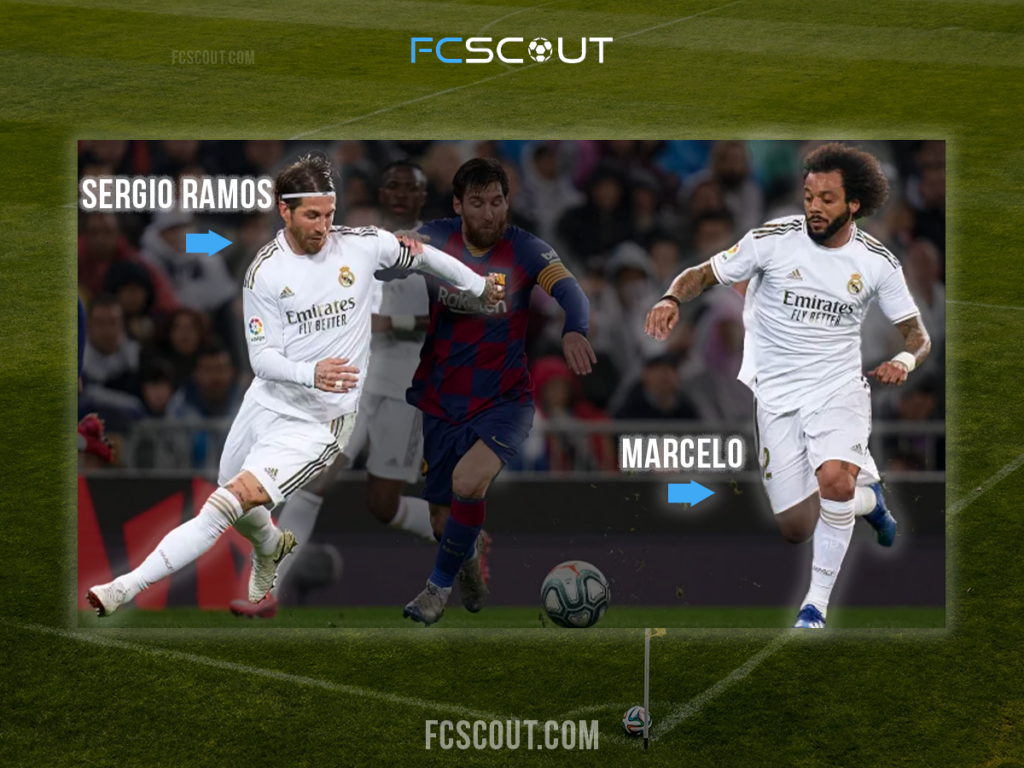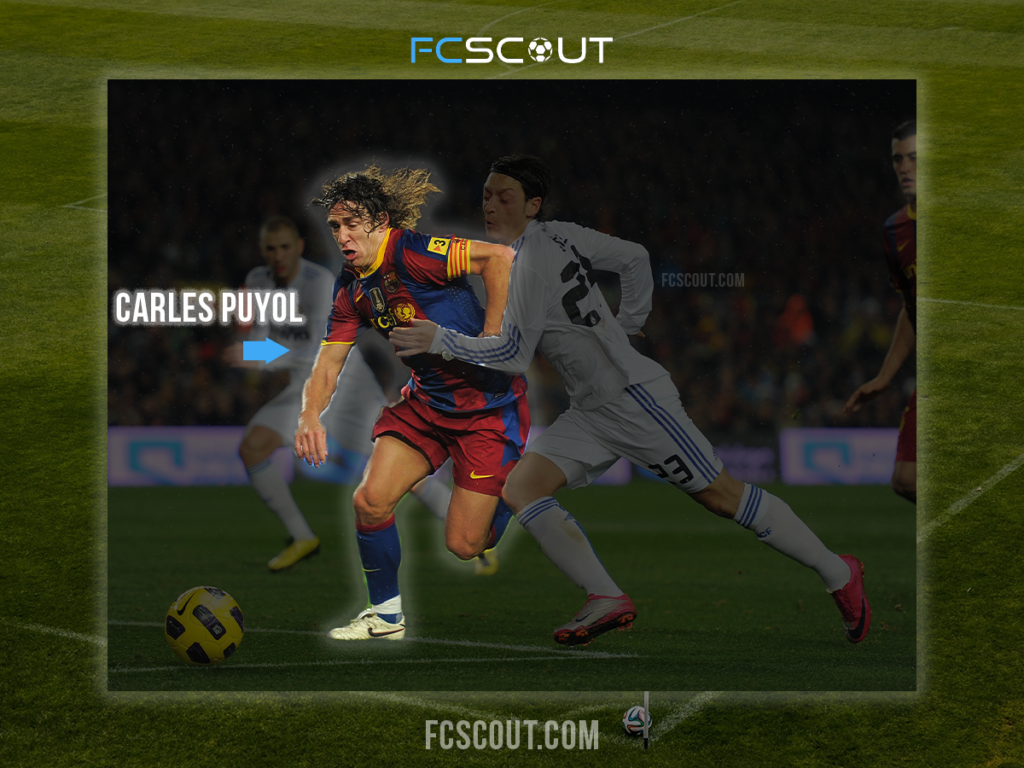What is a defender in soccer?
Soccer is one of the most popular sports in the world, played and watched by millions of people globally. It is a sport that requires teamwork, technical skill, and tactical awareness to be successful. One of the key positions in soccer is the defender, whose primary responsibility is to stop the opposing team from scoring. In this article by fcscout.com, we will explore the role of a defender in soccer, including their responsibilities, characteristics, tactics, skills, and famous defenders in the sport.

Understanding Soccer Defenders
In soccer, a defender is a player who is tasked with preventing the opposing team from scoring a goal. They are positioned at the back of the team’s formation, either as part of a back four or back three, depending on the team’s tactical setup. Defenders are responsible for blocking shots, intercepting passes, tackling opposing players, and clearing the ball from danger.
Roles and responsibilities of a defender
Defenders have a variety of roles and responsibilities on the soccer field. Some of their main duties include:
- Marking opposing players: Defenders must be able to mark opposing players closely, making it difficult for them to receive passes and create scoring opportunities. This involves anticipating the movements of the opposing players and staying in close proximity to them.
- Interception of passes: Defenders need to have excellent reading of the game and intercept passes made by opposing players. This involves predicting where the ball is going to be played and being in the right position to intercept it.
- Tackling: Tackling is an essential skill for defenders. It involves cleanly winning the ball from an opposing player, without committing a foul. Defenders need to be able to execute various types of tackles effectively, such as standing tackles, slide tackles, and block tackles.
- Blocking shots: When opposing players take shots at goal, defenders need to be able to block those shots to prevent them from scoring. This requires quick reflexes and a willingness to put their body on the line to prevent the ball from getting past them.
- Clearing the ball: When the ball is in the defensive half of the field, defenders need to be able to clear it out of danger. This involves kicking or heading the ball away from the goal and towards the opposition’s half of the field.
Types of defenders
There are several types of defenders in soccer, each with its specific roles and responsibilities. The most common types of defenders include:

Centre-back
Centre-backs are the most central defenders in the team’s formation, and they are responsible for marking the opposing team’s central attackers. They are often the tallest and strongest players in the team, and their primary responsibility is to prevent opposing players from scoring goals.
Full-back
Full-backs are positioned on either side of the centre-backs and are responsible for marking the opposing team’s wingers and full-backs. They need to be fast and agile, with excellent defensive and offensive abilities.
Wing-back
Wing-backs are similar to full-backs but play higher up the field, often acting as auxiliary wingers when the team is attacking. They need to have excellent stamina and speed, as they are responsible for covering a lot of ground up and down the field.
Sweeper
Sweepers are an older type of defender that is rarely used today. They play behind the centre-backs and are responsible for sweeping up any loose balls that get past the defence.
Stopper
Stoppers are aggressive defenders who focus primarily on winning the ball back from the opposition. They often play alongside a more composed centre-back and are responsible for pressing and tackling opposing players.
Characteristics of Successful Defenders
Successful defenders need to have a combination of physical and mental attributes to be effective on the field. Some of the essential physical attributes for defenders include:
Physical Attributes
- Speed and agility: Defenders need to be fast and agile to keep up with opposing players and make tackles effectively.
- Strength: Defenders need to be strong to win challenges for the ball and hold off opposing players.
- Height: Taller defenders are often better equipped to win headers and clear the ball out of danger.
- Endurance: Defenders need to have excellent endurance to cover a lot of ground up and down the field and maintain their performance for the full 90 minutes.

Mental Attributes
Defenders also need to have strong mental attributes to be successful. Some of the essential mental attributes for defenders include:
- Concentration: Defenders need to be able to concentrate for long periods, staying alert and focused on the game.
- Anticipation: Successful defenders need to be able to anticipate where the ball is going to be played and position themselves accordingly.
- Tactical awareness: Defenders need to have a good understanding of their team’s tactical setup and how they fit into the overall strategy.
- Communication: Effective communication is essential for defenders, as they need to be able to coordinate with their teammates and communicate any changes in tactics or strategy.
Tactics Used by Defenders in Soccer
Man-to-Man Marking
Man-to-man marking involves assigning each defender to mark an opposing player and follow them closely throughout the game. This is often used when the opposing team has a particularly dangerous player who needs to be closely watched.
Zonal Marking
Zonal marking involves dividing the defensive half of the field into zones and assigning each defender to cover a specific area. This is often used when the opposing team has multiple dangerous players, and the defenders need to work together to prevent any of them from getting too close to the goal.

Offside Trap
The offside trap is a defensive tactic used to catch opposing players offside, meaning that they are positioned closer to the goal than the ball when a pass is played to them. Defenders will move up the field together, with the aim of catching the opposing players offside and stopping them from making a goal-scoring opportunity.
High Press
The high press is a tactic used to pressure the opposing team when they are in possession of the ball in their own half of the field. Defenders will push up the field, trying to win the ball back and prevent the opposing team from building an attack.
Counter-Attacking
Counter-attacking is a defensive tactic used when the opposing team is attacking, and the defending team wins the ball back. Instead of immediately clearing the ball out of danger, the defenders will quickly move the ball up the field and try to catch the opposing team off guard with a quick counter-attack.
Skills and Techniques Required for Effective Defending
Tackling
Tackling is one of the most crucial skills for defenders. There are several types of tackles that defenders need to be able to execute effectively, including:
- Slide tackle A slide tackle involves sliding along the ground to win the ball from an opposing player. It is a risky tackle as mistimed or poorly executed slide tackles can result in fouls.
- Block tackle A block tackle involves getting in the way of an opposing player’s shot or pass, preventing them from getting the ball past the defender.
- Standing tackle A standing tackle involves using the defender’s body to win the ball from an opposing player, without going to ground.
Heading
Heading is an important skill for defenders, as they often need to win aerial challenges to clear the ball out of danger. Defenders need to be able to head the ball accurately, using their forehead to direct the ball away from the goal.
Jockeying
Jockeying involves staying close to an opposing player, without committing to a tackle. It is often used when the opposing player is in a dangerous position, and the defender needs to prevent them from shooting or passing.
Clearance
Clearance involves kicking or heading the ball away from the goal when it is in the defensive half of the field. Defenders need to be able to clear the ball effectively, ensuring that it does not fall to an opposing player.
Interceptions
Interceptions involve reading the game and intercepting passes made by opposing players. Defenders need to be able to anticipate where the ball is going to be played and be in the right position to intercept it.
Famous Soccer Defenders and their Achievements
- Franz Beckenbauer: Franz Beckenbauer is a German former soccer player and coach. He is widely regarded as one of the greatest defenders of all time, known for his elegant style of play and ability to play the ball out of defence. Beckenbauer won the World Cup as both a player and a coach, and he was the first person to win the tournament in both roles.
- Paolo Maldini: Paolo Maldini is an Italian former soccer player who played as a left-back or centre-back. He spent his entire career playing for AC Milan and won numerous titles with the club, including seven Serie A titles and five Champions League titles. Maldini is widely regarded as one of the greatest defenders of all time, known for his excellent defensive abilities and leadership on the field.
- Franco Baresi: Franco Baresi is another Italian former soccer player who spent his entire career playing for AC Milan. He played as a sweeper and is considered one of the best defenders of all time. Baresi won three European Cups and six Serie A titles with Milan, and he was known for his excellent reading of the game and ability to intercept passes.
- Carles Puyol: Carles Puyol is a retired Spanish soccer player who spent his entire career playing for Barcelona. He played as a centre-back and was known for his physicality and leadership on the field. Puyol won numerous titles with Barcelona, including six La Liga titles and three Champions League titles.
- Sergio Ramos: Sergio Ramos is a Spanish soccer player who currently plays as a centre-back for Paris Saint-Germain. He previously played for Real Madrid, where he won numerous titles, including four Champions League titles and five La Liga titles. Ramos is known for his physicality, leadership, and ability to score goals from set-pieces.
- Virgil van Dijk: Virgil van Dijk is a Dutch soccer player who currently plays as a centre-back for Liverpool. He is known for his physicality, leadership, and excellent defensive abilities. Van Dijk played a key role in Liverpool’s 2019 Champions League victory and was named the UEFA Men’s Player of the Year for 2019.
Conclusion
In conclusion, defenders play a crucial role in soccer, tasked with preventing the opposing team from scoring goals. Successful defenders need to have a combination of physical and mental attributes, including speed, strength, concentration, and tactical awareness. They also need to be able to execute a range of skills and techniques, including tackling, heading, jockeying, clearance, and interceptions. Famous defenders such as Franz Beckenbauer, Paolo Maldini, Franco Baresi, Carles Puyol, Sergio Ramos, and Virgil van Dijk have demonstrated the importance of the position and the impact that great defenders can have on a team’s success. As soccer continues to evolve and change, defenders will need to adapt their tactics and techniques to remain effective and help their teams achieve their goals.
EXPLORE MORE CLUBS!
Explore more professional clubs by continent.






